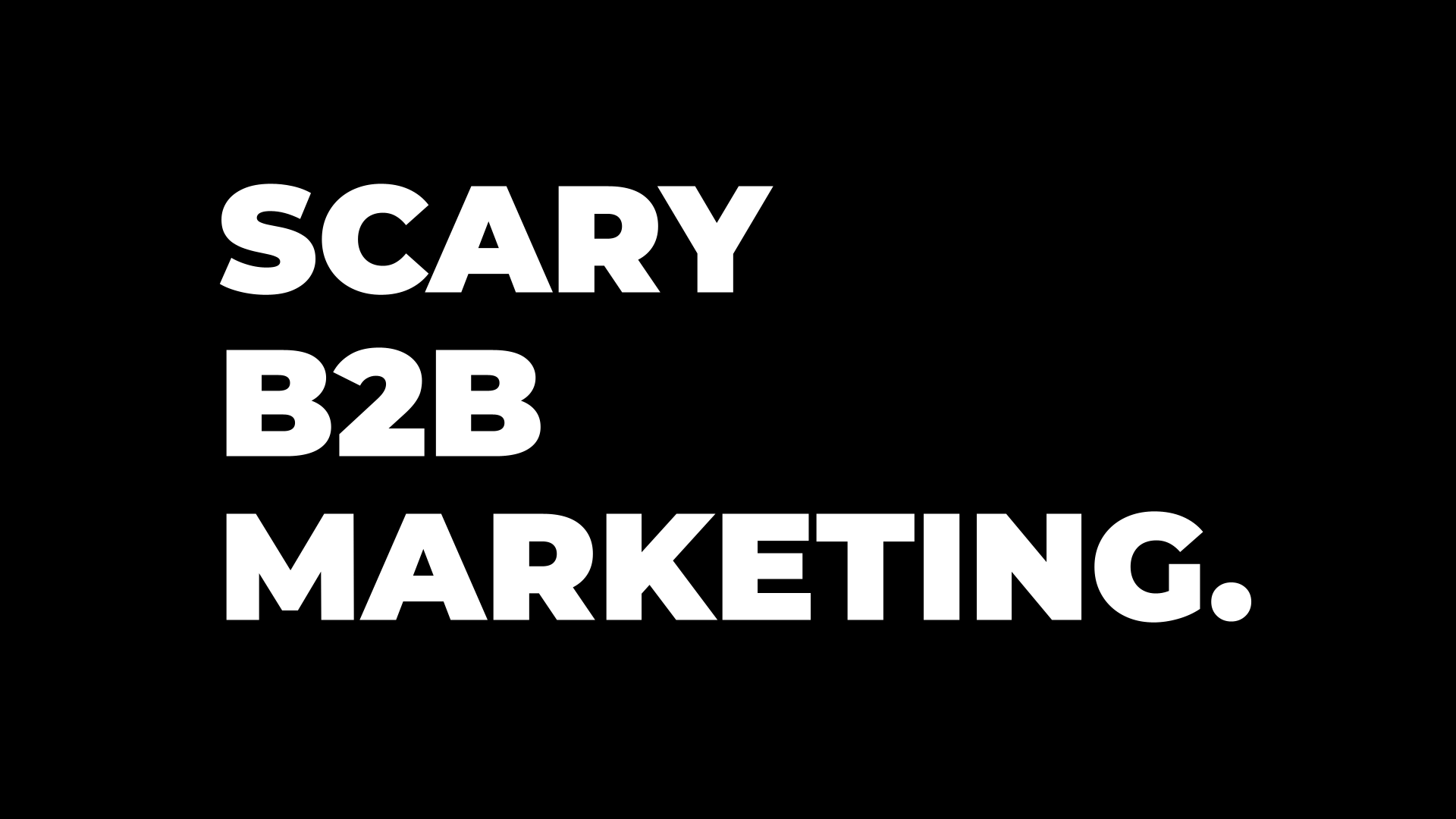
It’s Halloween, so let’s talk about what’s actually scary in B2B tech marketing right now. No, not costumes or tricks. Just the habits and status quo that keep showing up.
Last month, someone showed me their new content calendar. Dozens of blog posts and LinkedIn updates. All written in a few hours.
I asked one question: “Which one sounds like you?”
Silence.
When your default is “AI first, human second,” you’ve already lost.
Some of my clients still struggle with getting out of their own way. They know they need to, but they still resist. They see the light but revert to throwing darts in the dark.
I had a great chat this week with Jacob McGill over at 8020 Media and he said it best:
“It’s like they are waiting to get diabetes before they go on the diet.”
Jacob McGill, 8020 Media
For now, they continue doing what’s comfortable.
Status quo still reigns.
Gartner: Marketing budgets have remained flat at 7.7% of company revenue for the past two years.
McKinsey: Only 27% of organizations review all AI-generated content before it goes live. A similar share checks 20% or less.
Graphite: By November 2024, AI-generated content surpassed human-written. But search engines aren’t rewarding it. Across recent SERPs, about 86% of top-ranking articles are written by humans. Roughly only 14% are AI-generated.

Content Marketing Institute: Only 4% of B2B marketers report high trust in AI content (67% medium, 28% low).
When our own team doesn’t trust what we’re publishing, and our buyers don’t either, we have a brand problem masquerading as a content problem.
Like with any shiny new toy, we like to play.
I made this mistake with ChatGPT in the early days. Because I’m not a writer, I thought it could help me write articles.
How wrong I was.
Once you realize AI is just another tool, you soon realize it’s only as good as the person using it. And that comes with all kinds of limitations as mentioned in last week’s Razor.
“The trap isn’t that AI gets it wrong. The trap is that AI gets it average, and average feels good enough when you're moving fast. I’ve fallen into this trap. Everyone does. But once you see the patterns, you self-correct.”
For the record, Google doesn’t penalize content just because it’s AI-generated.
It penalizes content that’s low-quality, unoriginal, or spammy. And most AI content checks those boxes.
Google’s March 2024 update aimed to cut “unhelpful results” by roughly 40%. Sites scaling garbage with AI got hammered. Their January 2025 Quality Rater Guidelines now explicitly allow the “Lowest” rating for AI-generated content that lacks effort, originality, and value.
Once again, AI isn’t the problem. It’s lazy use of AI.
Although this has been written about numerous times, it’s worth repeating. Kind of like telling your kids to clean their rooms.
Most of your market is not going to buy your product today. If you’re lucky enough to demonstrate that you can reduce their risk of switching (Fear of F***ing Up), you could close roughly 5 out of every 100 opportunities at any given time.
But chasing hand-raisers quarter by quarter means you’re constantly chasing and starving.
Brand creates memory recall and earns confidence and trust in the rest of your potential market (the 95 out of 100) so when it’s time to upgrade or switch, they remember you.
But that’s not what’s happening.
GTM teams are using AI to scale content for the 5% while ignoring the 95%. More emails. More posts. More “personalized” outreach that reads exactly like everyone else’s.
“About 5% of your market is buying now; 95% isn’t. Brand memory wins the pick before the RFP.”
Content Marketing Institute
Forrester’s research confirms that differentiation happens during the different moments where brands show up.
The key is showing up.
Consistently.
The companies winning right now aren’t the ones with the best prompts. They document what makes them different before they handed anything to a model. They think before they act.
As mentioned last week, your best performers have tacit knowledge. Those are the judgment calls and micro-moves that make your frameworks work in your context and separate you from everyone else.
The companies that win also build brand memory with the 95%, not just harvesting the 5%. Think of it like reforestation. The trees you plant today will help you build tomorrow.
AI scales what’s documented. If your secret sauce lives in heads, AI won’t help you scale.
McKinsey’s research shows only 27% of organizations review all AI-created content before use. That’s not AI adoption. That’s abdication.
Here’s what every GTM leader should ask:
If your best rep quit tomorrow, could AI recreate what made them effective?
If your plan is “more content, faster,” you’re asking for a traffic dip and a trust hit.
If your plan is “document our unique value, build memory, prove impact,” you’re building something that compounds.
The scary part isn’t AI.
It’s the teams that keep treating it like a magic wand instead of a multiplier.
If you like this content, here are some more ways I can help:
Cheers!
This article is AC-A and published on LinkedIn. Join the conversation!